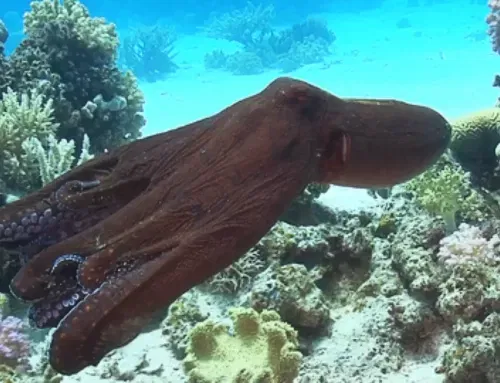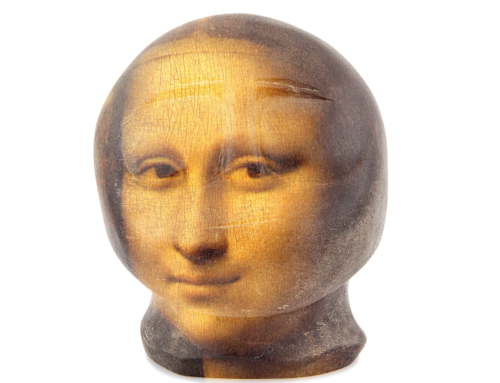“ I see,” said the blind man.
“Good,” responded his blind companion. “I too saw the light of day the moment I heard the explanation.”
Never mind what the blind man “saw,” or what his blind companion heard. I know precisely what the two blind men meant: they “saw” – understood – “the light of day” – the explanation, whatever the puzzle was. His “light,” of course, must have been dark. Or maybe not. Not being blind, I don’t know. Would there even be a distinction between light and dark if there was nothing seen?
Eyesight
For me and others with functional eyes, eyesight generally means visualizing external objects or forms of any type by photons exciting retinal photoreceptors. These in turn send the message via the optic nerve to the brain. “I see,” means, literally, that what I gaze upon (a complex neurological process) is represented by an image in my brain.
Remarkable.
Imaginative Sight
Yet – those persistent exceptions never seem to go away – I also say, “I see,” like the blind man, even when I don’t really see, no photons strike my retina, and it doesn’t matter if my eyes are open or closed. I’m not looking at anything. The imagined image is in my mind’s eye, which isn’t an eye at all. What I see is no different than a thought – an abstraction – which has no substantive reality.
“I see,” can also mean I have a plan of some sort. “I see how it can be done, or what I’ll do.” This time see is a metaphor for what I plan to do in the future, which doesn’t even exist yet.
What I see can be imagined.
However, invisible “sights” in my mind are not always consciously imagined. Dreams, those virtual “videos” – sometimes pleasurable, sometimes horrifying – creep into my sleeping mind without an invitation as indiscreet ghosts exploring the most private chambers of my brain. That’s another genre of seeing thrust upon one, like it or not.
And then there is creative sight – seeing of what’s not there – the inspirational seeing of artists, a destination, a goal, a vision that drives accomplishment.
False Sight
Rarely, I’ve had hallucinations – another version of seeing what’s not there, or rather misrepresenting what’s there, or might be there. One such hallucination I’ve had is of a spider (sometimes black, sometimes red) scampering across my visual field. This is partly dream, since I’ve been half asleep when it appears. Strange, but true, quite scary, even though it has neither substance nor danger. For scholarly types, the term, hallucination, comes from Sir Thomas Browne in 1646; it’s derived from the Latin alucinari, meaning to wander in the mind and has a negative connotation.
There’s also seeing by peering into a crystal ball or reading palms or tea leaves. “I see a great future for you, with a loving family and much professional acclaim,” says the soothsayer when telling the client what he wants to hear. This may be right by fluke, or more likely wrong, since it is vision built on sand mixed with fantasy, even more false than a mirage; it is false seeing exploited to deceive.
But such false seeing can also be sincerely meant, although still meaningless in my opinion. I’m referring to a prophet who sees visions of the supernatural, an image of God or of a forewarning of happenings – a prophetic vision of what’s in store.
Diversity of Seeing
Oh, my, is there no end of seeing? Certainly not if you consider nature’s ways to visualize. Vipers, pythons and boa constrictors have pit organs that can sense infrared radiation to outline a warm-bodied rodent by sensing the temperature difference between it and the cooler, ambient environment. Quite ingenious: seeing by temperature differential.
Dragonflies and bees and some other animals see ultraviolet light, which gives them another dimension to what they can see over the more limited range of wavelengths that we humans can see. Bats emit reflective sonar beams to see and avoid what’s in their path. Barn owls see a mouse by sensing its squeak to construct an internal map to pinpoint it in auditory space. Another ingenious way of seeing, this time using sound rather than temperature. And the duckbill platypus? They close their eyes, nose and ears to hunt food by cruising the bottom of streams to see with sensory receptors in their duckbill the movements and electric fields produced by its prey. If that’s not amazing, what is?
Enough for now. But keep in mind that vision – seeing – is one of nature’s greatest perks and a powerful way to sense the world; of course, vision is linked to many other sensory modalities, and its meaning can be stretched beyond seeing what’s physically there.






Leave A Comment